four
natural light – bringing the outside inside

Opposite page Second Temple of Hera, Paestum, southern Italy, 460–450BC.
Hellenic Light
The notion of classical light naturally leads us to Greek architecture, set in the full radiance of the Mediterranean sun. Ancient Greek architecture is delineated by light and shadow – be it on an urban or domestic scale. Greek residences formed a microcosm of the city-state itself, built around a large central courtyard with lighting patterns comparable to those of the city in miniature. Stark, clear-cut shadows reveal the complexities of three-dimensional objects, and the brilliant sunshine illuminates the architectural forms, even as it measures the passage of time.
As we study this subject we must bear in mind the strong symbolism of light in classical philosophy. Plato considered space, viewed as air, as one of the four elements of which the world was composed: earth, air, fire and water. Space thus became a tangible object, although different in nature from any other object in the world. A discussion of space is included in the Timaeus, a dialogue that had a great influence on the development of western architectural theory. Furthermore, light for the mind (meaning knowledge of reality) is the subject of the allegory of the cave in Plato’s Republic (Book 7), wherein he speaks of a world of shadows as the way in which we
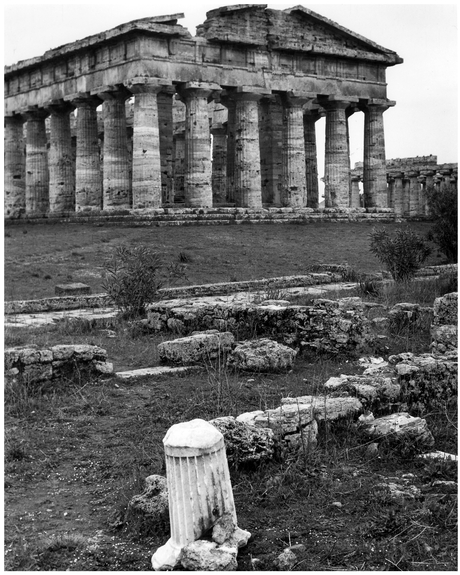
Figure 4.1 Doric temple of Hera II at the Greco-Roman city of Paestum in Campania.
know reality, since man would be dazzled and blinded by looking directly at the light, which is only attainable by the chosen. Plato writes: “And if he is compelled to look straight at the light, will he not have a pain in his eyes which will make him turn away to the shadows and take in the objects of vision which he can see?”2
Greek architecture, created for a climate suffused with sunlight, was also in total harmony with nature. The city of Paestum, founded c 600BC on the Gulf of Salerno in southern Italy, is a notable example, with three of the best-preserved temples from the archaic and classical Greek periods. The oldest is a temple to the goddess Hera, built in about 550BC; half a century later, the Temple of Athena is the first Greek temple to have incorporated elements from both Doric and Ionic orders; a second Temple of Hera (c 460–450BC) is one of the finest examples of Doric architecture to be found in the Hellenic world. In the central part of the complex is the Roman forum, thought to have been built on the site of the earlier Greek agora.
Temples in Greek civilisation were not gathering places, as we might imagine them today: they contained only a statue and offerings to the god to whom they were dedicated. Religious ceremonies and rites were celebrated in the open air around the altar, which stood in front of the entrance, usually facing east with the temple stretching away behind it.
At Paestum, Athens or Delphi – as in all ancient Greek cities – life was lived in the open air. The agora, meaning gathering place or assembly, was the heart of the city, the main public space for both work and play, or what the Romans would later come to define as otium (leisure) and negotium (non-leisure, or negotiation). The origin of this archetypal public space lies in the creation of a smooth, horizontal platform where people could gather, as opposed to the irregularity of the natural terrain. The next stage was to surround this platform with a stoa, an open-sided portico offering shade and protection from the sun. The whole Greek city was thus regarded as a stage, closely connected to the landscape, wherein the architecture framed, dignified and enhanced its citizens’ social, political, cultural and religious activities. The city’s major buildings also became important landmarks. Temples towering above the sea were much more than points of orientation for sailors. They were the powerful and enduring image of the wished-for homeland, most iconically expressed in Homer’s account of Odysseus’ longing for Ithaca during his epic return voyage from Troy.
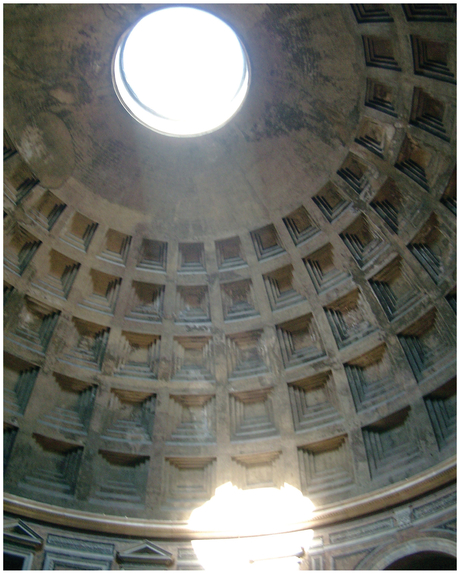
Figure 4.2 The Pantheon, Rome, AD118-28, thought to be designed by Apollodorus of Damascus.
Roman Light
A few centuries later, Greek civilisation was eclipsed by the splendour of the Roman Empire – and in Rome is the work that best represents the idea of light in classical architecture – the Pantheon.
The Pantheon
Although a work of novelised history, Marguerite Yourcenar’s Memoirs of Hadrian beautifully captures the intention of the Pantheon’s designer – widely held to be Apollodorus of Damascus, architect to the Emperor Trajan:
The Pantheon encloses a circular space 43 metres (141 feet) in diameter. It was built as a cylindrical drum topped by a hemisphere whose radius was equal to the height of the drum, the sides of which converge to reduce the sky to a nine metre (30 foot) oculus. Through this opening, light enters: the sun’s projection revolving as the day goes on in a constant movement that turns the interior into a magnificent sundial. Its light is reflected off the marble floor, casting inverted shadows like a photographer’s light box (see Figure 4.3). The combination of direct, reflected and diffused light with actual, reflected and inverted shadows patterns its walls with extraordinarily beautiful effects.
The true façade of this building is thus on the inside, which is, conversely, open to the elements. The walls, with their false windows, look on to this “façade”, the dome of which represents the sky. The Pantheon’s interior produces a sense of serene balance, as though cut off from the ceaseless roar of the streets outside. Within it, light and shadow predominate to such an extent that the space can be perceived as a black-and-white scene within the full-colour “film” that is the city of Rome. It is an open space, the character of which has remained unaltered down through the centuries because it is framed by the sky itself.

Figure 4.3 Inverted shadows in the Pantheon, Rome.
The Pantheon is generally believed to have been built by Apollodorus on the foundations of a first-century AD temple commissioned by Agrippa between AD118 and 128. It has survived to the present day in its original, full spatial strength, partly because its circular structure made it difficult to alter. Notwithstanding the pioneering technological expertise used in its construction, its remarkable preservation owes much to the radical clarity of the building’s geometry.
Apollodorus’ deliberate quest for a way in which to represent the entire known universe in one edifice, together with its geometrical purity, have conferred stability on the Pantheon down through the centuries. One could say that by being abstract, it has conquered the passage of time. Its formidable consistency leads us to think of it as a response to the artistic thinking sparked by classic Aristotelian philosophy: seeing form as the structure of inner order, and necessity as the criterion of the perfect work of art.
Centuries later, the great architectural theorist Leon Battista Alberti expressed this thinking in his ten-volume treatise De re aedificatoria (On the Art of Building), wherein he defined perfect beauty as “a harmony of all the parts, in whatsoever subject it appears, fitted together with such proportion and connection, that nothing could be added, diminished or altered, but for the worse”. This was a quality both noble and divine, attained in architecture almost entirely by harmony of proportion.4 The dome of the Pantheon helps us to understand why the French neoclassical visionary Étienne-Louis Boullée wrote:
Each of the points on a sphere differs from the others in the way in which light falls on it because of its different angle with regard to the light source, which means a maximum variety of aspects. A sphere is also considered to be geometrically perfect because it implies the notion of infinity.6 The Pantheon gives the sensation of the infite due to an absence of scale. It is so perfectly proportioned that it gives no visual clue as to its real dimensions. It is huge, but not disproportionate: built on a human scale it aspires to address the divine. In the words of Salvador Pérez Arroyo: “as one moves from

Figure 4.4 Sketch of the Roman Pantheon, by Julio Cano Lasso, 1980s.
sunlight to shade, the measurements of the space are perceived as uncertain for lack of any reference beyond the length of one’s own steps.”7 Its universal character makes it anonymous, turning it into a “type”, as shown by its strong influence on subsequent Western architecture. The Pantheon has had a great influence on many architects, who have all tried to reproduce its shape and space in modern works.
The Basilica
There are many other buildings where we can gain an idea of the Romans’ generous use of light, such as the magnificent baths of Caracalla (AD211–17) and Diocletian (AD 302) in Rome, or the earlier Villa Hadriana at Tivoli (AD124). However, where their spaces are no longer enclosed, they lose their the particular character of their light.
One specific type of Roman building has, however, survived to the present day relatively unaltered. This is the basilica, which, by being later adopted as a Christian place of worship, has largely retained its enclosed form. The basilica form, which predates the vaulted roof and has much in common with earlier Greek open porticoes, gives an excellent example of the notion of the continuity of interior light with that of the exterior. It could be considered a public square with porticoes and a roof. Examples from Rome are the basilicas of S Maria Maggiore (AD432), S Maria in Aracoeli (AD574) and S Sabina (AD422–32). This essential character is, generally speaking, displayed by all the great early Christian basilicas in which later ornamentation, painting and alterations have not changed the essentials of the space. Only in the case of S Giovanni in Laterano (St John Lateran) (AD330) have later alterations – in this case, those of Francesco Borromini – actually meant a change in the quality of the interior light.
Renaissance Light
Following the medieval period and its adoption of symbolic light in the gothic cathedrals of Europe (considered more fully in Chapter 5), the Renaissance brought a return to the idea of the “classical” – understood not just as a list of items that made up the classical language of architecture, but mainly as the rediscovery of the spatial effects of light as used by the ancients: light as a physical element within buildings, which enabled them to share in the infinity of a continuous, universal space.
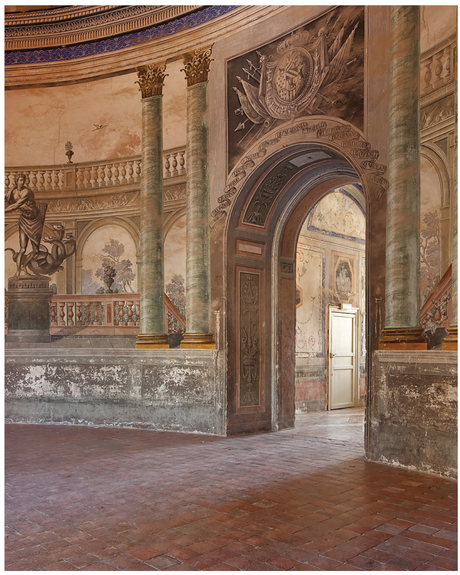
Figure 4.5 An example of perspectiva communis, projected onto the curved walls of the Villa Palagonia, Bagheria, Sicily (1715).
Medieval architecture had been used to convey meanings and messages, chiefly through the medium of the magnificent stained-glass windows of its great cathedrals. Now, however, with the invention of printing there was a much more effective tool for this purpose, and architecture was set free from the task. Although stained-glass windows continued into the early Renaissance period – in ecclesiastical buildings such as San Jeronimo, Granada, and the Cathedral of Granada in southern Spain – the printed page enabled them to lay aside the role of teaching, and to turn instead to more abstract meanings. In this way, they came to complement the architecture of the building in a similar manner to painting – and walls, rather than windows, became once again a great canvas to be painted on. White light throws natural shadows in different shades of grey, and we perceive shapes through the interplay of light and shadow. Material theorists of the Renaissance, like Leonardo da Vinci, analysed light and used it as a scientific instrument for understanding reality. Another reason that Renaissance architecture preferred clear glazing to the deep colours of stained glass was that, by doing away with deep shadows, it softened the surfaces within gothic churches and so raised the visual sensation to the level of the immaterial.
Light was now largely stripped of its symbolic connotations, and was valued exclusively as a physical element that enabled Renaissance artists and architects to perceive and understand space without any medieval pretensions to transcendence. The new innovation of perspective was, for the Italian painters of the Renaissance, a scientific method of representation that surpassed the gothic system of symbolic lighting.
In the 15th century, new figurative-drawing techniques being developed in Italy and the Low Countries brought fresh possibilities of representation through the empirical system of perspective, which replaced the medieval symbolic idea of space. At this point, we find special attention being paid to light as a quantifiable and qualifiable element in scientific enquiry. As a result, the representation of reality according to a normative system of rules found, in natural light, the best instrument with which to express the space, volume and substance of objects. The luminous golden backgrounds of 14th-century Italian trecento paintings were replaced by perspectives, the graphical manifestation of the notion of unlimited space. The concept of space changed: from being treated as a “closed box”, it now became an open stage. The early Italian Renaissance painter Fra Angelico was the first to attempt to apply this new optical expression in practice. His three Annunciations, panel-painted altarpieces,

Figure 4.6 Annunciation, painted altarpiece, 1428, by Fra Angelico.
comprise the best possible treatise on applied perspective. From the first – the altarpiece painted in 1428 for the monastery of S Domenico in Fiesole, near Florence, in which he introduces the architecture’s spatial depth – he developed his technique in order to achieve, a few years later in the Cortona Annunciation, a brilliant relationship between perspective and light.
The reconstruction of classical theory transmitted to us by Renaissance thinkers offers two different types of perspective. One is called perspectiva artificialis, or artificial perspective: this is perspective according to the principle of the vanishing point, at which lines meet in infinity, based on the fifth of Euclid’s geometric propositions. The other is perspectiva communis, or natural perspective, in which the image is projected on to a curve that follows the curvature of sight (Figure 4.5); this technique is based on optics rather than geometry.
Much Renaissance study of the representation of light and shadow has come down to us through Leonardo da Vinci’s works on painting. Comprising six volumes, these are closely connected with contemporary studies of space. The theoretical or symbolic meaning given to light by the Neoplatonists – who claimed, along with the fifth-century AD philosopher Proclus, that “space is nothing other than a very special kind of light” – did not change anything in the systematisation of perspective. It may, nonetheless, explain Leonardo’s extreme interest in the phenomena of light and shadow. In his six books Leonardo goes to great – perhaps even naïve – lengths in classifying, assigning and defining, in his desire to be exhaustive. His comparative definitions of light and shadow are very clear:
Every reference to light in Leonardo’s work is conditioned by perspective, and every drawing is executed with regard to the trajectory of the rays of light and its interferences, bearing in mind the angles of reflection. His research methods, although they are stated in a dogmatic fashion, are comprised of his experiences drawn from observation, and these were intended to better serve the representation of shadow and light.
Alberti, in his work On the Art of Building, maintains that it is painters who will make most use of perspective in their work. In his book On Painting, he rates the painter higher than the architect, since architects merely give physical effect to what has been created by painters – ie painters were considered as producing the project, and architects simply as builders.9 Indeed, architects had now to begin producing formal plans with dimensions to scale, since in a perspective drawing measurements necessarily appeared distorted and therefore falsified. It was Raphael, Donato Bramante’s successor at St Peter’s at the Vatican, who established the accepted method of setting out the plans, elevations and sections of an architectural project separately, just as they are normally still done today. He also made use of small-scale models as working instruments in order to demonstrate projects in three dimensions, as the Florentine sculptor/architect Antonio Filarete had recommended in his 1460s Treatise on Architecture.
Filippo Brunelleschi is considered the first true Renaissance architect. Typically for the period, he initially trained as an artist, and the panels that he painted constituted optical “instruments”; these artistic enquiries aimed to rediscover the methods and mechanics used by the ancients. Brunelleschi’s work expressed not so much a concept of the world as a new way of valuing reality, understood as an object. His studies and analyses led him to recover if not the style of the ancients then their deep adherence to nature, taking the laws of physical nature, including laws of light, and applying them to his building methods. Guilio Carlo Argan, one of the foremost critics and historians of Renaissance art, claims that:
The Tempietto
A perfect expression of Renaissance space can be seen in Donato Bramante’s Tempietto (little temple) at S Pietro in Montorio, Rome (1502–10). Small and perfectly proportioned, it summarises the aspirations of its time. Like the Hellenic temples of classical antiquity, it is designed to be seen from the outside. A commemorative monument, it marks a place of great symbolism for Christians: the spot on which the first pope, St Peter, was crucified. Underlying it is the same primordial desire that moved early humans to erect funerary monuments such as the dolmens of Neolithic Europe: to mark a spot, to preserve a memory. It holds no utilitarian purpose or programme, but is a monument pure and simple.
In aspect, the Tempietto is one harmonious whole, a material expression of the exercises in perspective being undertaken by the architects of the time. Its perfection of form is reinforced by the integrating of each of its different parts into a single structure. From whichever angle it is viewed, this work of art is seen in its totality. It satisfies the mind as well as the eye, as an exercise in composition executed according to classical rules. It is abstract, in so far as it has no recognisable scale; as also happens with the Pantheon, it is only possible to gain an idea of its – in this case, diminutive – size through comparison with structures outside itself.
The Tempietto’s perfect geometry also suits its symbolic nature and is crucial in the building’s treatment of light. The smooth precision of its dome and circular wall receives and dissolves the light without any sudden breaks or sharp-edged shadows, and the effect is one of serenity. As Argan writes:

Figure 4.7 Tempietto di San Pietro in Montorio, Rome, 1502–10, by Donato Bramante.
The Light of the Enlightenment
The next forceful appearance by classicism on the European stage came in the 18th century, with the movement known – appropriately enough for our purposes – as the Enlightenment. This period is even referred to as the “century of lights”, and one of its towering figures was the English physicist and mathematician Sir Isaac Newton. As well as discovering gravity, Newton also established, as we saw in Chapter 1, that natural sunlight – which he called “white light” – contained all the colours of the rainbow.
Eighteenth-century arguments about light can be seen as belonging to one of two opposing sides. The first held that light was made up of different particles projected through space, subject to physical forces such as attraction and repulsion. The second saw light as matter in flux, rather like a fluid. Curiously enough, the differences in the results obtained by each side were minimal. The defenders of the particle theory were able to develop the mathematics of their argument a little further, and defenders of the fluid theory included those who made a special study of shadows, something that in any case was done in a fairly unmathematical way.
This was also the time of the development of ‘sciography’, the study of the representation of shadows through means of lineal perspective. The Traité de perspective à l’usage des artistes (1750) by Edme-Sébastien Jeaurat provides a good example of the exercises that developed this new technique of perspective, calculating shadows by their light sources – from the light of the sun (whose rays are, for most scientific purposes, considered to be parallel) to the outward-spreading rays of a candle flame.12
In the 18th century, sciography proved useful to disciplines such as astronomy. The precise projection of shadows was also used for the measurement of planar surfaces and the accurate depiction of spatial relationships in different types of technical and architectural drawing. However, in spite of such technical applications, some Enlightenment-era thinkers remained sceptical about the uses of sciography. In the mid-1700s, the Dutch scientist Willem Gravesande, in a chapter of his Essay on Perspective entitled “Of Shadows”, recommended attentive observation of the phenomena connected with light, since these were a more reliable path to knowledge
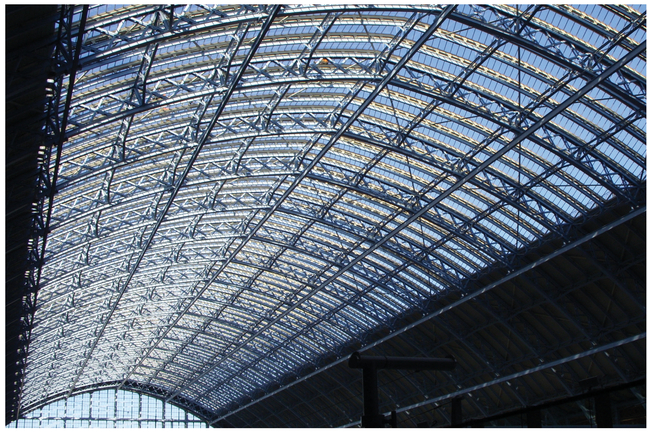
Figure 4.8 Ceiling of St Pancras Station, by Sir George Gilbert Scott, London, 1867
than the mere application of rules, which were not equally valid in every case. The maverick English architect Sir John Soane, whose mastery of light can be seen in some of the more mannerist interiors of the age, likewise stressed active observation, advising his students of architecture:
Mannerism such as Soane’s eventually gave way to full-blown baroque – whose exuberant and restless manipulation of light we shall discuss in Chapter 6. However, by the end of the 18th century, the baroque style’s use of sophisticated lighting “experiments” – involving filtered, lateral light, studied for its scenic possibilities in interiors; and various, dramatic optical effects – had run its course. It was replaced by a rational return to continuous, “universal” light, admitted through skylights or windows arranged with rational modulation, in order to increase the amount of natural external light reaching the interior.
The Enlightenment, with its worship of clarity, reason and the beginnings of industrialisation, eventually also saw new possibilities for the use of light through the rise of vast expanses of glass – adopted in the architecture of what came to be known as Romantic classicism. Joseph Paxton’s immense and visionary Crystal Palace, erected in London’s Hyde Park for the 1851 Great Exhibition, demonstrated the possibility of creating a “greenhouse” on an almost citywide scale.
The new concept of space permitted by these technological advances was applied to gallerias and railway stations, such as Sir George Gilbert Scott’s St Pancras Station in London of 1867; the Galerie des Machines, designed by the engineer Victor Contamin and the architect C L F Dutert for the 1889 Paris International Exhibition; and the Manufactures and Liberal Arts Building designed by skyscraper pioneer George B Post for the World’s Columbian Exhibition in Chicago in 1893. Often through ambitious national “great exhibitions”, Europe and North America were enriched with extraordinary urban glasshouses, which
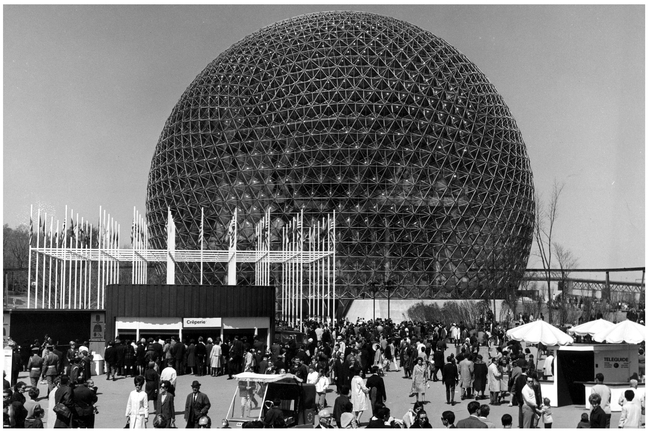
Figure 4.9 United States Pavilion, Île Sainte Hélène, Expo ‘67, Montreal by R Buckminster Fuller.
inaugurated a hitherto-unknown relationship between light and architecture. Light fell from the glass panels to bathe these interiors with gentle radiance. When the sun’s rays were stronger, the space became floodlit, so that shapes and human figures stood out against the background, and an effect of spatial ambiguity was produced by the slenderness of the great metal frameworks required to enclose these cathedral-sized new spaces.
This development led eventually to the work of the 20th-century US visionary Richard Buckminster Fuller. His geodesic domes, constructed of prefabricated frames, are like a materialisation of Boullée’s utopian designs of two centuries earlier. Fuller’s largest dome was that built as the American Pavilion for Montreal’s Expo 67, a celebration of technology. Transparent and light-permeable, these domes also prefigured new goals with their amazing relationships with light, and even gravity itself. Fuller theorised that a truly colossal dome would require a structure weighing only a fraction of the weight of the air inside it – potentially allowing entire cities (which Fuller called “Cloud Nines”) to float.
Modern Light
The Industrial Revolution that transformed western Europe from roughly the mid-18th century onwards gave rise to a profound change in building techniques, by creating countless new processes and materials. As the “dust settled” on this unprecedented upheaval, around a century later, the innovative light of the new, great glass-walled spaces became part of a collection of new and sometimes disturbing experiences that would have a deep effect on nascent modern taste.
Pioneering European Modernism
A significant example of this trend was Walter Gropius’ and Adolf Meyer’s Fagus Factory (1911) at Alfeld-an-der-Leine in Lower Saxony. Along with pioneering examples by fellow-Germans Peter Behrens and Hans Poelzig, this building revolutionised industrial architecture. Its high, glass walls provided continuity from outside to inside – especially at its famous “structure-free” glazed corners, so that the building was no longer a closed box punctured with “holes” but a series of geometrically connected planes. Gropius, like Le Corbusier in his early, purist work, expressed a functionalist view of space and light, saying of this concept that:
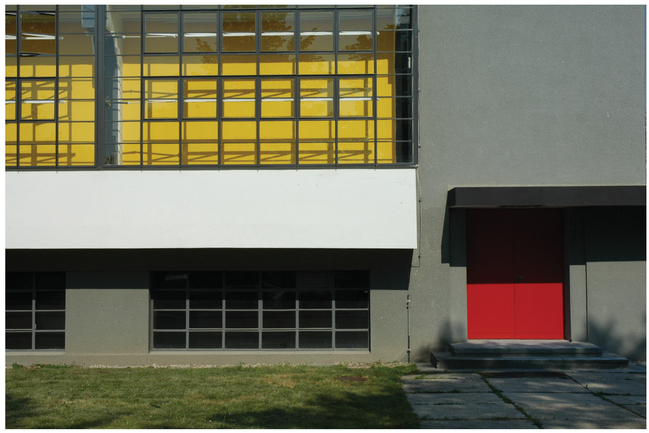
Figure 4.10 Bauhuas school, Dessau, 1925–6, by Walter Gropius.
The next step was taken by Ludwig Mies van der Rohe, when he developed the concept of “universal space”, in which light and space flow together homogeneously. Mies’ mature work is a real, materialised version of transparent architecture. The light in his interiors mingles with the light outside; there is perfect continuity between them, and the eye perceives no boundaries. The clarity of Mies’ shapes, enormous transparent prisms, seems to go beyond a purely functionalist concept of space to one that speaks to the infinite and is located between rationalism and metaphysics. This was underlined by his statement in 1938, in his inaugural lecture as Director of the School of Architecture of the Armour Institute of Technology in Chicago, in which he said that there could be no better explanation of the intention and significance of his own work than the phrase attributed to St Augustine: “beauty is the splendour of truth”.
By contrast, the Cartesian, rational light of functionalism denies any metaphysical connotations; it is not born from darkness, and does not need the opposition of darkness in order to exist. Its life is autonomous, as the natural condition of architecture, prefiguring a peaceful society free from internal conflicts.
Despite their obvious (and often stunning) aesthetic aspects, Gropius’ Bauhaus at Dessau (1925–6), Le Corbusier’s Villa Savoye (1928–31) and the Rietveld Schröder House (1924) share this functionalist concept of light, understanding it as a universal property that delineates the geometric structure of the architecture. Gropius, again, characterises it as:
Behind the glass expanse of the Bauhaus elevations, its classrooms are flooded with a light that enters through a transparent wall unfiltered and unmediated, neither broken down nor used as modelling material. Here, light is considered as space: an unformed

Figure 4.11 Manantiales restaurant, Xochimilco, 1958, by Félix Candela; it was restored in 1996 by Elisa Valero Ramos.
quantity that must simply be subdivided and assigned as a necessary attribute of the building. In the functionalist credo, transparency and light need to confirm and affirm the principle that light equals hygiene and inhabitability, and the moral call that nothing mysterious or hidden should be left in the unfolding of social relations, or in the working of the great machine of human society.
For the masters of modern architecture, such as Gropius, Meyer and Rietveld, light could be transmitted and diffused through space unrestrictedly, and this is a necessary – indeed, a major – factor in their architectural work. At the same time, it must not be forgotten that shadow and shade are indispensable allies in generating architectural space. Where quantity has been mistaken for quality, many opportunities have been lost for employing shade and nuance to suit an architecture more perfectly to its function.
In their book Light and Space: Modern Architecture, Paolo Portoghesi, Yukio Futagawa and Riichi Miyake stress that:
Southern Light: The Work of Candela in Mexico
This modernist approach to breaking down the barriers between exterior and interior light has often been developed in a more natural way in a non-European context. In the architecture of Félix Candela, for example, the warm climate of Mexico makes it possible to maintain a practically unbroken connection between outside and inside. A covering to provide protection from sun and rain can be enough to produce a habitable space. So Candela, embracing the Mexican tradition of defined outdoor spaces, created hyperbolic paraboloids (“hypars”) that can be considered as covered outside spaces whose limits are dematerialised and whose “insides” become shade.
In some cases – such as that of Candela’s Manantiales restaurant (1958) in Xochimilco, Mexico City, or his Bacardi bottling plant at nearby Cuautitlán (1959–60) – the internal space is partially bounded by glazing, which does not interrupt its continuity with the outside. In others, such as the open chapel at Cuernavaca (1959), not even that
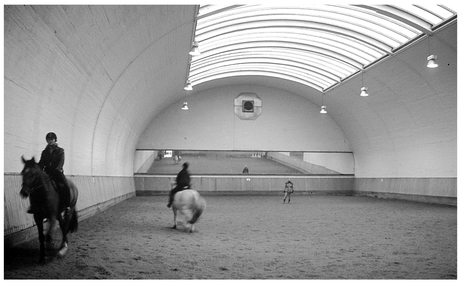
Figure 4.12 (top) Mattsson’s riding stable at Klampenborg, 1931, by Arne Jacobsen.

Figure 4.13 (bottom) Staatsbibliothek (State Library), Berlin, 1967–78, by Hans Scharoun.
is necessary. The Mexican light alone endows these sheer surfaces with enormous drama. Their covering “shells” are essentially simple and open – sculpted to fit their setting, making no distinction between inside and outside. There must, of necessity, be some element of enclosure, but this has been effected in the lightest possible way. Great sheets of glass are supported by a framework of steel lines; the result is a harmony of concrete, steel and glass – the three components that revolutionised 20th-century architecture.
In 1996, I was commissioned to restore Candela’s Manantiales restaurant, which had fallen into disrepair. The contrast between the brightness of the upper shell and the shade below emphasised the fine line of the free edge, so that the rising curves of the shell seem to defy the laws of gravity, being pinned to the ground at just eight points which, rather than supports, appear more like anchors holding it down. The physical separation between interior and exterior is thus just a near-invisible glass plane, presenting no appreciable barrier to the continuous flow of the restaurant’s sylvan garden setting. A major decision in the restoration work was to return the building to its original white. It had been given a coating of reddish waterproofing, and this had had the effect of visually flattening and diminishing its shell. White was fundamental in enhancing the lightness of the structure.
Nonetheless, it is a mistake to think, as many people do, that in modern architecture, whether in northern or southern climes, light automatically means the colour white. Modern architecture includes the most daring colour experiments, as demonstrated by Le Corbusier, who applied polychromy that accorded with the brightness of the walls – as in, for example, his 1933 Cité de Refuge complex in Paris, designed in collaboration with Pierre Jeanneret.
However, the enthusiasm felt by early European modernist architects for the possibilities opened up by technology was dampened by experiences such as those encountered in this very building. Le Corbusier and Jeanneret intended this Salvation Army hostel to provide its users with “the ineffable joy of full sunlight”. It proved a notable failure, however. The interior of the building was so hot that in order to render it habitable, brises-soleil, or sun screens, had to be installed on its outer wall of sheer glass. This was a severe blow for Le Corbusier, but it resulted in his taking a long step towards maturity. It led him to overcome the temptation of functionalist utopias and

Figure 4.14 Covered swimming pool, Berlin, 1929, by Heinrich Tessenow.
concern himself with the calculation of light – not only in general, but adapting it to the geography and climate of the particular locality, as is shown in his studies and lighting charts, similar to structural calculation charts, for the sun screens.17
Northern Light: Germany and the Nordic Countries
As we have seen, in countries such as Mexico with a warm climate, structures can be open to the outside; whereas in northern countries they have to be enclosed, and interior spaces aim to give the impression of the open air by the skilful way in which natural light is brought inside them. Notable examples are Arne Jacobsen’s 1931 Mattsson’s riding stable, at Klampenborg, Copenhagen, and Heinrich Tessenow’s 1929 covered swimming-pool in Berlin. Hans Scharoun’s Staatsbibliothek (State Library) in Berlin (1967–78) is another magnificent example of this northern architectural approach to space, which designs light and airy spaces inside a building. On entering, the sensation is that of continuity, as though the street, with its rough and dark-coloured stone flooring, runs through the building. The “inside” has become an air-conditioned “outside”. The various volumes and independent platforms that comprise this fluid space differentiate its parts without closing them off from each other, increasing the impression of being in the open air. The different sections are indicated by varying ceiling heights, appropriate for the specific purpose of each.
It becomes obvious that the desire to capture light and adapt it to space is the backbone of these projects, the leitmotif of this kind of architecture. Light is brought in sideways where the orientation of the building permits, and is reinforced with skylights in spaces with no outer wall. Artificial light is also arranged in such a way as to dissimulate the absence of natural daylight, with luminaires set into the actual skylights so as to lengthen the short winter days by artificial means.
There is a precedent for this kind of lighting in the famous “several suns”, the cylindrical rooflights that illuminate the interior of the reading room at Alvar Aalto’s Vyborg Library (1927–35) built in the then-Finnish city of Viipuri, which give the subconscious idea of sitting beneath a magical sky. The reading room, in keeping with the project’s initial intent, represents a hillside lit by many suns. This constructing of ceilings like skies with multiple suns is a recurring device in contemporary Nordic architecture as a way of lighting single, unified interior spaces;
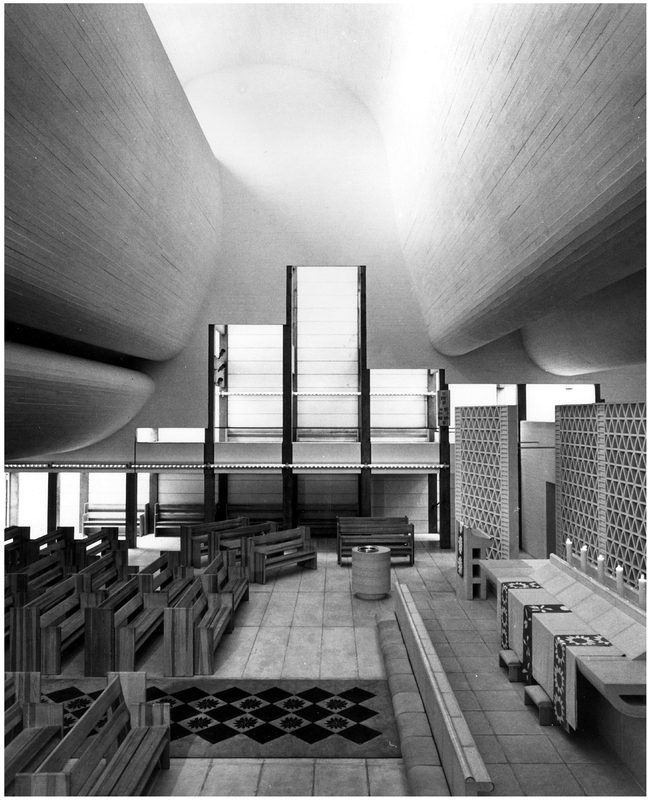
Figure 4.15 Interior, Bagsvaerd Church, Copenhagen, 1968–76, by Jørn Utzon.
the desire to recreate the outside is evidence of a need to share in the vault of the sky. Its continuing influence spans beautiful examples from Reima and Raili Pietilä’s 1961–6 Dipoli student assembly building in Otaniemi, to the Snøhetta team’s 2011 Norwegian Wild Reindeer Centre Pavilion, located at Hjerkinn on the outskirts of Dovrefjell National Park.
Illusionism is thus a deeply rooted phenomenon in the Nordic architectural tradition. In his Skandia cinema in Stockholm (1922–3), Erik Gunnar Asplund even strove to reproduce the effects of the verbena or moonlit festivals traditionally held in the squares of Mediterranean town and cities. His seating boxes of varying sizes look like little buildings grouped along a Pompeii-style street. The dark-blue sky with artificial lighting in the form of scattered globes, suggests the equally magical idea of a night with many moons.
Danish architect Jørn Utzon, too, offers a masterly example of an artificial sky in his church at Bagsvaerd, near Copenhagen (1968–76). The undulating lines of its ceiling are like clouds that reflect and bring in the light from above, converting the interior space into an unusual, purely illusory, space – once again, feigning the effect of the open air.
